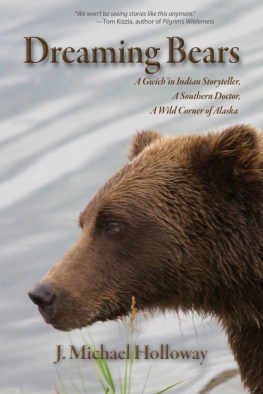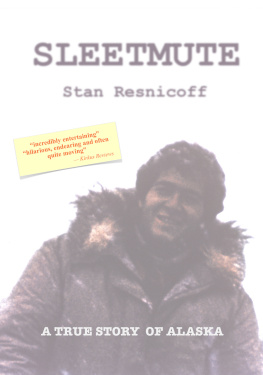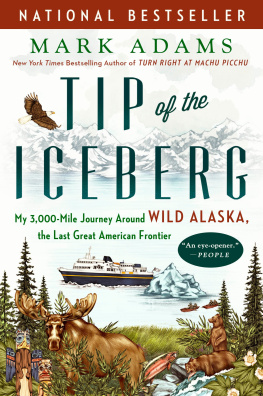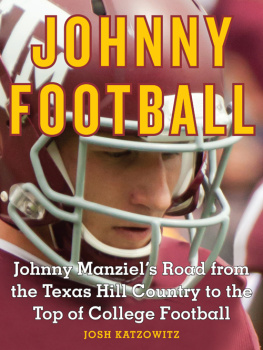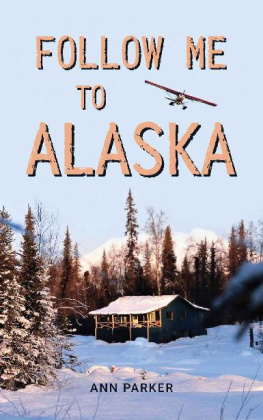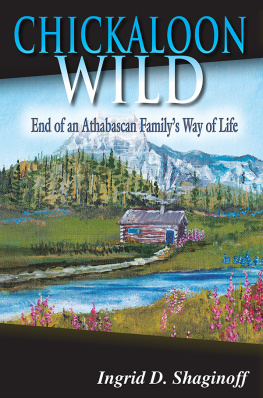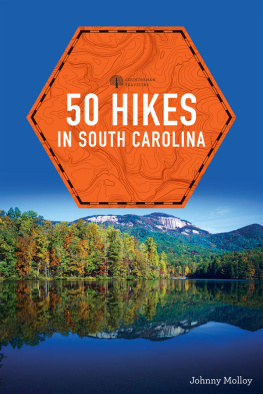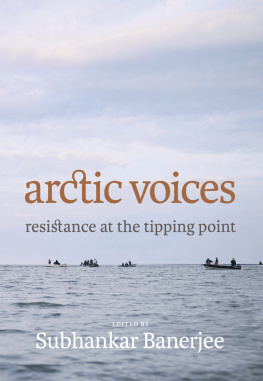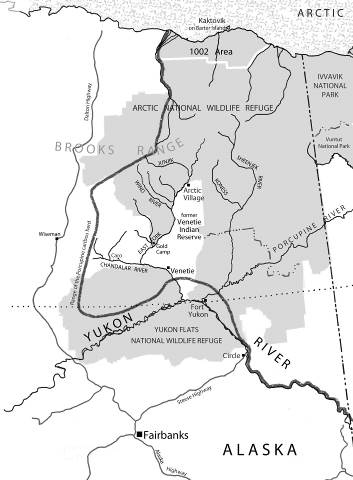Dreaming Bears
A Gwichin Indian Storyteller, ASouthern Doctor, A Wild Corner of Alaska
by
J. Michael Holloway
Copyright 2014 J. MichaelHolloway
SMASHWORDS EDITION
Published by
Epicenter Press, Inc.
EPICENTER PRESS
Alaska BookAdventures
Epicenter Press6524 NE 181st Street#2
Kenmore, WA 98028
(425) 485-6822
www.epicenterpress.com
Epicenter Press is a regional presspublishing nonfiction books about the arts, history, environment,and diverse cultures and lifestyles of Alaska and the PacificNorthwest.
Copyright 2014 J. Michael Hollowaywww.jmichaelholloway.com
All rights reserved. No part ofthis publication may be reproduced, stored in a retrieval system,or transmitted in any form or by any means, electronic, mechanical,photocopying, recording, or otherwise, without the prior writtenpermission of the publisher. Permission is given for brief excerptsto be published with book reviews in newspapers, magazines,newsletters, catalogs, and online publications.
Trademarks are used in the text ofthis book for informational purposes only, and no affiliation withor endorsement by the trademark owners is claimed orsuggested.
Cover photo and maps by Margie AnnGibson
ISBN 978-1-935347-30-9 (ebook)
Library of Congress Control Number:2014933733
10 9 8 7 6 5 4 3 2 1
Produced in the United States ofAmerica
Digital conversion by Lava E-booksInc.
SMASHWORDS EDITION LICENSENOTES
All rights reserved. This e-book islicensed for your personal enjoyment only. This book may not bere-sold or given away to other people. If you would like to sharethis book with another person, please purchase an additional copyfor each person you share it with. If you're reading this book anddid not purchase it, or it was not purchased for your use only,then you should return it to Smashwords.com and purchase your owncopy. Thank you for respecting the author's work.
* * *
Dedication
* * *
This book is dedicated with love to my friend,companion and wife, Margie Gibson.
* * *
Foreword
This is a powerful story of friendship and adeep love of nature that transformed lives and altered the fate ofan Indian nation.
When young Mike Holloway took a break from hismedical studies for a summer of backpacking in Alaska he had no wayof knowing he was about to forge a bond with a traditional medicinemanlet alone play a pivotal role at the most critical moment inthe history of the Gwichin, the northernmost American Indians inthe world.
It all began with a misadventure. Mike made itto the remote village of Venetie, but his idea of simply headingout across country, as he might in his native South Carolina,proved unrealistic. What to do?
Well, said the chief of Venetie, Better foryou to go up to Gold Camp on East Fork, see Johnny Frank. So hedid, arriving exhausted after a 36-mile hike to find Johnny andSarah, already in their eighties, living quietly by themselves,hunting and fishing much as their people had for thousands ofyears.
Sitting around a campfire with Johnny, Mike sawthat the Gwichin had been content to live quietly in their cornerof the world, letting the commotion of the twentieth century passthem by. There were no roads to their villages. It was fine withthem if few from the outside world visitedor even knew theyexisted.
At summers end, Mike returned to medicalschool. In time, he became a highly skilled orthopedic surgeon andmoved to Alaska. Though he began raising a family near Anchorage,he got out to see Johnny and Sarah whenever he could. With eachvisit, Mike grew closer to them and learned more about theGwichin.
Much as the Plains Indians once depended onbuffalo, the Gwichin still depend on caribou. Artifacts indicatethat caribou and ancestral Gwichin have shared this part of theArctic for at least 27,000 years. Elders like Johnny Frank may notcount the years, but they say their relationship with the cariboubegan long ago, in a time when all creatures spoke the samelanguage. In that distant time the caribou and the people were one.As they evolved into separate beings, the tundra sustained thecaribou and the caribou sustained the Gwichin. Mike was among thefirst to see that this relationship with the caribou might suddenlyend and if it did, the Gwichin way of life would collapse.
Oil companies had already developed the hugePrudhoe Bay field and now wanted to move into the Arctic NationalWildlife Refuge to drill in the heart of caribou calving grounds.Mike alerted the Gwichin, who immediately understood that if therewas drilling in their calving grounds the caribou would go the wayof the buffalo. Political forces were aligned to open the refuge todrilling. The Gwichin had to act immediately.
Act they did, traveling to Washington, D.C.,again and again, to convince lawmakers that the Arctic CoastalPlain had to remain closed to drilling to protect both thePorcupine caribou herd and the Gwichin. Mike worked tirelesslywith the Gwichin, even taking a leave of absence from his medicalwork to lobby in Washington D.C.
Its been a joy to see Mike honored by theGwichin and by his peers in the medical profession. Its beeninspiring to see how hes fought for others over the years. Now,its a great joy to see that Mike has written such a beautiful andmoving account of his friendship with Johnny and Sarah.
Alaska is often called The Last Frontier. Viewedas a man of this frontier, Mike Holloway is, in his own way, asimportant as Kit Carson, the renowned mountain man, was in his day.They both went out to the margins of civilization and thewilderness. They both encountered Native Americans who had a greatdesire to live as their ancestors had lived. Unlike Carson, whohelped usher in the demise of Indians by killing the wild creaturesthey depended on, Mike devoted himself to protecting both theanimals and the people.
Among the Gwichin, Mike Holloway will beremembered as The Messenger.
For all of us, its heartening to know that thehistory of the American frontier, which saw the devastation of somany creatures and Native cultures, includes a Mike Holloway whosevision and sensibilities helped preserve rather than destroy. Andit all started with a young mans desire to head out forAlaska.
ArtDavidsonauthor of the classic Minus 148Degrees: The First Winter Ascent of Mt. McKinley
Introduction
The Athabascan Gwichin people, the northernmostIndians in North America, live in remote villages scattered acrossthe vast interior Arctic. In northeast Alaska, their traditionalhomeland extends from the Chandalar River in the west, across theriver valleys draining southern slopes of the Brooks Range, andeastward into northwest Canada as far as the Arctic Red River, atributary to the Mackenzie.

